|
Wikipedia is a wealth of sagely advice – much of it misleading, incomplete and out of context. For instance, the author dealing with the ‘Tai Sabaki’ page - states that the usual interpretation of Tai Sabali in the West which involving ‘evasion’ is ‘wrong’. However, if an individual can ‘read’ Chinese and/or Japanese ideograms – it is obvious that whatever this concept is - ‘evasion’ forms a central aspect of it. The author in question does not fully comprehend the entire concept of Tai Sabaki and is attempting to join the two ends of an idea together whilst omitting a (vast) theoretical centre-ground! 1) 体 (Tai) - Japanese Equivalent of Chinese ideogram ‘體’ (ti3) = ‘body’ This is related to a body (comprised of - and structured by - its internal bone structure) which is augmented in the physical world through musical rituals (involving drumming) and the adornment of jade of jewellery. The body is enhanced by the placement and alignment of its inner structure and the means (rituals) through which this body traverses the outer world. That which is ‘detrimental’ is avoided and that which is ‘nourishing’ is embraced. There is an implication in the Japanese language that ‘体’ (Tai) refers primarily to the trunk and the abdomen – and only secondarily to the limbs. It is the ‘centre’ of the body which has priority over the ‘periphery’ of the body. 2) 捌 (Saba) - Japanese Equivalent of Chinese ideogram ‘捌’ (ba1) = Disentangle This ideogram - (in its Chinese interpretation) can mean ‘eight’ - an alternative form of ‘八’ (ba1). A ‘hand’ which expertly uses a ‘knife’ - cuts through the flesh and bones of a fish so that it is separated into ‘eight’ clean parts (probably a generic term meaning ‘many’). There is also the central idea of ‘disentanglement’ - so that no unnecessary error (or resistance) is met. This is because ‘entanglement’ means ‘hindrance’ - and the skill referred to here involves the ‘avoidance’ of such self-imposed difficulty. Evading ‘resistance’ is the correct path that leads to such a skill. The blade of the knife skilfully feels its way around (and along) the natural contours of the bones – and does NOT cut directly (at right-angles) into the bone-structure at any time. There is a ‘going with’ rather than a ‘going against’. This ideogram is the central element of this Karate-Do principle - and probably means slightly different things within the various styles which make use of it. 3) き(Ki) - Japanese Equivalent of Chinese ideogram ‘幾’ (ji3) = Skill There is an indication of ‘quantity’, ‘measurement’ and ‘refinement’ within Japanese language dictionaries. The suggestion is that the correct manipulation of exact amounts is a great skill which has to be mastered in any successful avenue of life. This idea spans both the material and the spiritual world! An individual can carefully follow the established criterion laid down by those who have gone before – or if such an individual possesses the correct (and right) amounts of psychological insight and physical strength – then they might set out on their own path and become an inspiration for those who are to come! Conclusion: Meaning When taken as an integrated whole – the martial principle of Tai Sabaki (体捌き) suggests that the physical body (its central core and not just its periphery) is skilfully used (manipulated) in a combat situation so that there is no direct conflict between the defender deploying this technique - and an attacker ignoring this technique. Tai Sabaki (体捌き) is NOT just the skilful movement of the arms and legs in ‘protection’ of the central core (the torso). Tai Sabaki (体捌き) is a ‘centre-out’ technique that requires the core and periphery to work in concord. Strength does not clash with strength. The ability to assertively ‘give-way' is the key to this technique. Indeed, when the timing is perfect - ‘giving-way’ becomes far stronger than the momentary strength associated with a dramatic (but short-lived) show of strength! Giving-way, at its highest manifestation, not only ‘absorbs’ and ‘nullifies’ ALL incoming power – but when performed correctly, generates the basis for ‘greater’ power to be produced that is not reliant upon linear (muscular) strength – but rather the ‘circular’ movement associated with the structures of the bones and joints! The bodyweight ‘drops’ into the ground through the shaft of the (aligned) bones and rebounds upwards through the centre of the bone-marrow – producing a seemingly endless supply of ‘muscle-free’ power! As this power is greater than that associated with the muscular ‘tension’ of thuggery – the defender occupies a unique time-space frequency within which the attacker cannot access (or penetrate) regardless of the willpower exhibited. The linear attacks cannot land on an object continuously moving in perfectly timed circles. Once such a level of mastery is achieved – the defender can decide the level damage perpetuated upon the attacker depending upon circumstance. Should the body of the attacker be temporarily or permanently disabled? Should the body of an attacker be only (gently) nullified as if in play? Someone who has mastered Tai Sabaki (体捌き) possesses all these choices. This is why the Wado Ryu Style of Karate-Do posits the highest ideal of a defender possessing the ability to prevent damage to both their own body AND the body of the opponent! An ideal of the highest nobility!
0 Comments
Translator's Note: A quick over-view is as follows: '・An unemployed man (65) was arrested for cutting a company employee (58) with a sickle on the street in Hachinohe City, Aomori Prefecture. ・At the time, the man is said to have cut the office worker about 10 times with a sickle with a blade length of about 16 centimeters . ・However, the male office worker was protected by his umbrella, so he was not injured. ・In response to the investigation, the man admitted to the allegations.' It would appear the victim was a martial arts expert and that the video linked above is a demonstration of his ability!. ACW (5.2.2023) The Umbrella is Mightier Than the Sickle. Carrying around an umbrella can be a nuisance at times. But when it is needed who hasn’t held one and wondered if it could be used as an impromptu Jackie-Chan-style weapon should the need arise? Luckily, such a need rarely does arise so most of us will never know. But for one man in Hachinohe City, Aomori Prefecture, an umbrella was the only thing preventing him from serious injury or even death. At about 2:50 p.m. on 12 January, the 58-year-old office worker was walking along a street near his home. Then, a man holding a sickle with a 16-centimeter (six-inch) blade attacked him out of the blue. It was truly a nightmare situation, but the victim’s quick thinking and reflexes saved the day as he managed to use his umbrella to deflect the attack. In total, the assailant took 10 swings at the man with the tool but each one was deftly blocked by the umbrella and the victim managed to emerge unharmed. Police arrived on the scene and arrested the 65-year-old attacker who admitted to the charges against him. The two men had no prior relationship and police are currently looking into what motivated him to carry out the attack. Meanwhile, readers of the news were full of nothing but admiration for the victim who showed that an umbrella really could be used as a defensive weapon. “He didn’t even get hit once?! He’s a master.” “This is totally like in Siren.” “You have to be some kind of martial arts master to escape a sickle attack unharmed with an umbrella.” “He won by only blocking too. He’s probably really good at Sekiro.” “Life is becoming an open-world action game.” “He’s a Kingsman!” “If he had a clear vinyl umbrella he could have made a beam shield.” “The samurai spirit is strong in him.” The victim was never identified and wasn’t interviewed by the media. I’d like to think in true hero fashion he just walked off into the sunset and relaxed by a koi pond while tranquilly playing a bamboo flute. Either that or he went home and played PlayStation to learn some more sick moves with everyday objects. Source: ATV News, Hachima Kiko Japanese Language:
鎌で通行人の男性を切りつけ 65歳男を逮捕 被害者は傘で防いでけがなし 青森・八戸市 鎌を持った男(65)が、自宅周辺にいた会社員男性(58)に10回も切りつけるも傘で全てガードされ、逮捕される ・青森県八戸市(はちのへし)の路上で会社員の男性(58)を鎌で切りつけたとして、無職男性(65)を逮捕した。 ・当時、男性は会社員の男性に刃の長さが約16センチの草刈り用の鎌で10回ほど切りつけたという。 ・しかし、会社員の男性は持っていた傘で防いだため、けがはなかった。 ・調べに対し、男性は容疑を認めている。 Reference Terms (Google Searches): ・鎌使い対傘使い - 'Sickle User Vs Umbrella User!' ・傘対鎌でけがなしとは武術の達人か - 'Sickle User V Umbrella Martial Arts Master - No Injury?' ・サムライスピリッツかよ - 'Is It the Spirit of the Samurai?' YouTube Reference (English): Crimes Of The Week International: January 27, 2023 There is a belief found in ancient China that as soon as words are made on paper - a corresponding material reality is a) generated, and/or b) reinforced (in the case of pre-existing realities). This sense of 'importance', 'inevitability' and 'mystery' stems from writing (a rare art right up to the 20th century in China) being associated with the ancient divination process. Indeed, the Chinese writing system evolved from the shamans 'interpreting' and 'reading' the cracks made in collected turtle plastron and ox scapulae by the application of a hot poker. This followed a question being subnitted by the 'King' - which was carried-up to the divine-sky by the smoke generated by the hot poker 'touching' the shell or bone - with the (returning) answer being assumed to be contained in the subsequent 'cracks' that appeared! Needless to say, a body of knowledge (and associated 'interpretative' symbols) was eventually established. Up until 1949 only around 10% of the Chinese population was 'literate' (with 90% remaining permanently 'illiterate') - with the 'literacy' rate today being in the high 90% (with 'illiteracy' remaining mostly amongst the very old or the cognitively disabled, etc) - but the cultural attitude toward the importance of 'words' still persists. Therefore, the naming of a martial art within Chinese-influenced cultures is rarely a trivial matter, and I suspect Miyagi Chojun had been thinking about - (and discussing this issue) - far more extensively (and in depth) than the usual 'naming' stories would suggest and imply. When Miyagi Chojun chose the two traditional Chinese ideograms of '剛' (Go - Gang) and '柔' (Ju - Rou) he was achieving two objectives: 1) He was generating order in the material environment by 'confirming' the existential presence of his martial art. The art exists because the name exists - and vice versa. Within ancient China it was believed that by compiling lists of 'things' and 'objects' (including 'names') - a corresponding order was being constructed and reinforced in the material environment. An 'order' that cannot be questioned. 2) Miyagi Chojun was stamping his authority upon the art he had been taught and entrusted with by his teacher Higaonna Kanryo - projecting this order 'backwards' into history - all the way back through time (and associated 'lineage') to the 'root' of the art in Southern China. In other words, Miyagi Chojun was confirming the transmission and his receiving of the transmission - whilst proving he is worthy of it! He is placing his family's clan banner firmly in the ground, making a statement of authority and authenticity, and daring anyone to challenge him - which, of course - no one was stupid enough to do! In this case, the martial art defined as 'Go' and 'Ju' had previously existed (in one form or another) - but now had reached a level of technical sophistication (and stabilization) so that the profound physical-psychological principles of 'Go' and 'Ju' (containing the corresponding meanings you ascribe) could now be considered fully established and developed!
Dear Tony Watching this (and all the excellrnt videos you have forwarded) - Ju jitsu looks like Qinna - or an element of Qinna. Qinna - or 'Joint Relocation' as Master Chan referred to it in Hakka - emphasises breaking bones, dislocating and/or snapping joints, but only in its highest or most deadliest aspect. The Chinese language instructional texts talk of the 'grip' being developed so that 'skin' is torn-off and 'bones' shattered like glass! a) Ju Jitsu (柔術) = 'Rou Shu' - or 'Soft Expertise/Art'. An ethnic Chinese speaker once explained the underlying concept behind the 'Rou' (柔) ideogram to me as 'to ride in another person's rickshaw' - which I thought was superb! Not just 'borrowing' - but if need be - 'stealing' another person's vehicle of transportation (or mode of 'movement') certainly with their knowledge (after-all, they are 'present'), but equally 'without their consent' (as the resulting outcome is often contrary to that desired by the opponent)! b) Qin Na (擒拿) = 'Catch Relocate' (Probably 'Kin Na' in the Japanese language). Working down from that level of destruction, there is the well-known 'controlling' of the opponent through 'light' joint relocation designed to 'move' the body around (from an 'inconvenient' place to a 'convenient' place), or to 'disarm' or 'subdue' whilst leaving the opponent or assailent relatively 'unharmed'. Indeed, what makes genuine Taijiquan so effective is its inner core of guiding Qinna. Coupled, of course, with the mastering of the dropped bodyweight through an aligned bone structure - and the efficient directing of the resulting 'rebounding' force from the ground to the extremities - a process which allows for the generation of tremendous 'breaking' force with apparently 'little' effort! Thanks Adrian
The Development of Yongchun White Crane Fist – the Basis of Okinawan Karate-Do! (4.11.2022)11/5/2022 (Translated by Adrian Chan-Wyles PhD) Translator's Note: I read through (and carefully translated) this meandering Chinese language text regarding the known history of Fujian White Crane Fist! To make sense of the context - I had to reference other Chinese language historical texts in an attempt to decipher what exactly is being said! Even so, as much of this genre of (folk) history is entirely 'local' in nature, even (contemporary) ethnic Chinese language speakers do not understand the what exactly is 'meant' by the words and phrases being used. We must use our experience and knowledge to establish the most likely meaning. There appears to be a subtle blend of fact and myth - perfectly entwined - so that it becomes difficult to tell one aspect from the other! During this interpretive process, we must remain anchored within historical 'fact' - but where is the 'fact' we must remain anchored within? What we do know is that somehow a) this martial art does physically 'exist' through a discernable history, and b) as a distinct body of knowledge it ended-up in the hands of Higaonna Kanryo! ACW (5.11.2022) White Crane Fist (白鹤拳 - Bai He Quan) is often referred to by the geographical indicator of ‘Yongchun’ (永春). This Style of martial arts is just one of the of many developed by the Han nationality throughout the Fujian area. It began to emerge as a distinct martial arts Style during the latter Ming Dynasty (1368-1644). From its root source, four distinct lineages have developed: 1) Flying (飞 - Fei) 2) Singing (鸣 - Ming) 3) Sleeping (宿 - Su) 4) Feeding (食 - Shi) These four variations of White Crane Fist all manifest in slightly different and specific ways, so that a unique and distinct Style is evident in each case. These differences stem from the practitioners emphasising particular traits observed in the defensive and aggressive behaviour of the White Crane species of bird. All of this speciality is known today as the White Crane Fist Style. According to legend, this Style originated within the Funing (福宁) Prefecture, Fujian Province – today known as Xiapu (霞浦) County. As a Style, it developed out of the ‘external’ (外 - Wai) Shaolin Fist (少林拳 - Shaolin Quan) method taught to Master Fang Zhonggong (方种公) at the ‘North Gate’ (北门 - Bei Men). He taught his only child (his daughter) ‘Fang Qiniang’ (方七娘) - and it is Fang Qiniang who is considered the ‘Founder’ of White Crane Fist. Soon after she was born – Fang Qiniang’s mother passed away from illness. Her father believed that his only daughter should be strong and stand tall – just like a man – and he taught her to practice martial arts every day. Fang Qiniang eventually married ‘Zeng Si’ (曾四) - who was a native of Yongchun County situated within the Quanzhou area of Fujian province (although some records suggest his family originally came from Zhejiang – before moving into Yongchun and resettling). As Fang Qiniang lived and taught her Style in ‘Yongchun’ it is referred to today as being ‘Yongchun White Crane Fist’. The White Crane Fist specialises in generating vibrating and shaking (弹抖 - Dan Dou) power (劲 - Jin) of both arms. The open-hand ‘Palm Law’ (掌法 - Zhang Fa) method emphasises a penetrating and piercing power which is similar to an arrow hitting an opponent after being fired from a bow – but devastating the opponent at very close-range. This method is supported by penetrating footwork that decisively advances and retreats – footwork that also ‘pretends’ to advance and retreat – causing confusion and mistimed reactions in an opponent. Explosive force (力 - LI) is generated by the White Crane Fist practitioner when taking advantage of an opponent’s errors. For this to happen, the joints and fingers of the White Crane Fist practitioner must be ‘strengthened’ and appropriately ‘conditioned’. Stepping must be both precise and diverse. Every blow must be thrown with explosive power. The arms must shake, vibrate and tremble with ‘hard’ and ‘soft’ energy continuously interchanging in a manner which cannot be predicted or understood by the opponent. This is held together by the bodyweight smoothly ‘dropping’ and ‘rising’ continuously and without interruption. Each Style of White Crane Fist presents these techniques in different and varied ways. Within the folk storytelling developed during the early Qing Dynasty, it was said that ‘Crane Immortal’ (鹤仙 - He Xian) taught Fang Qiniang – whilst others state that Fang Qiang was taught only by her father – a native of Funing! Whatever the case, all stories agree that Fang Qiniang was the Founding Patriarch of the White Crane Fist Style! Fang Qiniang was clever and pretty – and was committed to learning martial arts! As Fang Qiniang refused to get married – she was banished to a local Buddhist Temple known as ‘Bai Lian’ (written as ‘白练’ or ‘白莲’ - the second variant appearing to be a play on words) meaning both ‘White Lotus’ and ‘Pure Practice’. Her Buddhist teacher was said to be the ‘Crane Immortal’ (鹤仙 - He Xian) who came down to Earth to instruct her in the art of ‘White Crane’. Fang Qiniang had to combine hours of seated Ch’an meditation with the continuous observation of the ‘hard’ and ‘soft’ movements of the White Crane birds that inhabited the temple grounds. (Another version worthy of consideration is the following story: One day, Fang Qiniang was immersed in the shuttle weaving on a traditional loom. Suddenly, a White Crane bird flew gracefully into the area - hovering near her roof and looking down. The White Crane bird finally flew down to the floor of the hall - standing quietly next to the loom. Looking up at Fang Qiniang – the bird refused to fly away and stood quietly for a long time. Fang Qiniang was very surprised by the inner stillness and outer poise of this bird. Fang Qiniang picked up the shuttle box and threw it – but the White Crane remained unruffled and simply ‘spread its wings’ in a graceful manner – and intercepted the shuttle box perfectly – causing it to bounce back with an effortless force. Fang Qiniang raised the bamboo inkstone used for weaving and attempted to strike the White Crane. Unexpectedly, the White Crane ‘shook’ its body - and the bamboo inkstone was bounced back! When Fang Qiniang saw this behaviour she was impressed and puzzled! On this day, the White Crane bird with its plump, white feathers refused to fly away! When night fell, Mr. Fang Zhonggong asked Fang Qiniang to bring out some white rice and sweet potato to feed the White Crane in the hall! Despite all this movement – the White Crane refused to move but remain quiet and still – but always alert! These events were a preparation for a white-haired Immortal to visit the Fang family and convey the martial art of the White Crane Fist!) Once these movements (and reactions) were understood – Fang Qiniang had to integrate this new knowledge into her already existing Shaolin martial arts practice. This process took four years to achieve, and the White Crane Fist Style of martial arts was developed! As the ‘Bai Lian’ Temple became a well-known and respected centre of gongfu practice and given that Fang Qiniang was a renowned Buddhist monastic – she changed the name of the temple to ‘Jiao Lian’ (教练) or ‘Teach Practice’ Temple (寺 - Si). One day, a man named ‘Feng Si’ visited the temple and respectfully requested that Fang Qiniang teach him the White Crane Fist Style she had developed. He trained as her Disciple for over ten-years – and eventually the two people fell in love. This prompted Fang Qiniang to leave the temple and resume the lay life so that the two could get married. This is how the White Crane Style was taken back to Yongchun (the place of Fang Si’s birth) situated in Quanzhou - and took root in this part of Fujian province! The couple had numerous children and passed this family Style. The constituent originating lineages included are: White Crane Fist (白鹤拳 - Bai He Quan) Bai Lian Temple (白练寺 - Bai Lian Si) a) ‘Crane Immortal’ (鹤仙 - He Xian) b) ‘Fang Qiniang’ (方七娘) c) ‘Zeng Si’ (曾四) Southern Shaolin Fist (南 少林拳 - Nan Shao Lin Quan) a) ‘Fang Zhonggong’ (方种公) - Father b) ‘Fang Qiniang’ (方七娘) - Daughter c) ‘Zeng Si’ (曾四) - Husband of Fang Qiniang & Son-in-Law of Fang Zhonggong The foot work of the White Crane is light, exact and yet ‘heavy’ when ‘heaviness’ is required! The White Crane can move across the ground – barely touching the floor – like snowflakes falling from the sky! This is the foot work of heroes! Martial arts training is beneficial for the development of the mind and body! The White Crane Fist puts a great emphasis upon physical fitness! As a result, the White Crane Fist is masterful in attack and defence! The White Crane Fist is simultaneously both simple and enriched! These are the twenty defining attributes (and forms) of the White Crane Fist: 1) The White Crane generates the shape. 2) The shape manifests in the fist! 3) The form is taken from the name. 4) The name suggests elegance as its crowning glory 5) The White Crane protects the centreline throughout the upper, middle and lower parts of its body. 6) The Thirty-Six Divine Sky Gods 7) The Seventy-Two Broad Earth Demons 8) The One-Hundred and Eight Dharmas 9) The White Crane Flashes its Wings 10) Thirteen-Step Vibrations 11) Seven Steps – Three Battles 12) Thirteen Grand Protections 13) The White Crane is both ‘firm’ and ‘not’ firm. 14) The White Crane is both ‘soft’ and ‘not’ soft. 15) Shaking and vibrating with strength from the ground upwards. 16) There is a continuous change of skilled applications. 17) The structure is precise and always clearly maintained. 18) The awareness is always clear regarding offence and defence. 19) Always demonstrate mercy before raising your hand. 20) When the time comes to raise your hand – show no mercy! Higaonna Kanryo [1853-1915] (东恩纳宽量) was the first Okinawan to learn the White Crane Fist. From the Chinese gongfu he took back to Okinawa – the ‘Empty Hand Way’ (空手道) or ‘Karate-Do’ would be eventually developed. It is the White Crane Fist which serves as the technical foundation to the development of Okinawan and Japanese Karate-Do. In other words, the ‘Empty Hand Fist’ (空手拳) or ‘Karate-Ken’ is really what is called ‘Yongchun Fist’ (永春拳 - Yong Chun Quan) in China! It is believed that the White Crane Fist is part of the ‘Shaolin Five Ancestor Fist’ (少林五祖拳 - Shao Lin Wu Zu Quan) tradition. This tradition developed in the Quanzhou area of Fujian province and is linked to the Southern Shaolin Temple situated in this area. The five Styles which form this System are as follows: a) White Crane Fist (白鹤拳 - Bai He Quan) b) Monkey Quan (猴拳 - Hou Quan) c) Arahant Fist (罗汉拳 - Luo Han Quan) d) Bodhidharma Fist (达尊拳 - Da Zun Quan) - also referred as ‘Mind Intention’ Boxing (心意拳 - Xin Yi Quan) e) Grand Ancestor Fist (太祖拳 - Tai Zu Quan) Although it is agreed that Fang Qiniang invented the White Crane Fist Style – it was her husband (Zeng Si) who is often cited as teaching the art prolifically within the Yongchun area. Historical records suggest that the couple lived in the area during four different time periods and were prone to travelling. It seems that the couple did not permanently stay in the Yongchun area, but they did favour the place as a base of operations – and it is from here that a renowned centre of White Crane Fist practice developed. The implication is that they settled there toward the end of their lives together. Although the historical text I am referencing is ‘old’ (and difficult to contextualise), there is an indication the couple taught White Crane Fist near to the ‘West Gate’ (西门 - Xi Men) of Yongchun, to the rear (and ‘outside’) of the ‘Name Temple’ (庙 - Miao) pertaining to the ‘Gu’ (辜) family. Technically speaking, this would be a Confucian Temple maintained by the local Gu family (designed only for the use of that family) comprised of a hall for social gatherings (which could include gongfu practice), and an area for the cremated remains of the Gu ancestors stored in large, sealed earthenware pots (together with pictures and biographical texts). Later, out of respect for Zeng Si, this training area became known as the ‘Zeng Martial Temple’ (曾武馆 - Zeng Wu Guan). This might suggest that the Gu Temple was eventually taken over as a centre for White Crane Fist practice – and was locally known by the above variant. This how the White Crane Fist Style took root within the Yongchun area. During the more than one-hundred years between emperors Kangxi (r. 1661-1722) and Qianlong (r. 1735-1796) - the White Crane Fist was widely disseminated and exchanged both inside and outside Fujian province. As an effective martial art favoured by the local population, it was continuously absorbed, summarized and improved upon – a process which greatly enriched and developed its technical and theoretical content. This important historical (developmental) period may be considered the ‘heyday’ of the White Crane Fist Style. The different names associated with this Style of martial arts are: i) White Crane Fist (白鹤拳 - Bai He Quan) ii) Fujian White Crane Fist (福建白鹤拳 - Fu Jian Bai He Quan) iii) Fujian Shaolin White Crane Fist (福建少林白鹤拳 - Fu Jian Shao Lin Bai He Quan) iv) Yongchun White Crane Fist (永春白鹤拳 - Yong Chun Bai He Quan) v) Southern Shaolin White Crane Fist (南少林白鹤拳 - Nan Shao Lin Bai He Quan) Between the reigns of the Qing Dynasty emperors Kangxi, Qianlong and Jiaqing (嘉慶), that is to say from around 1664-1821 – the record books suggest that the White Crane Fist Style has been passed on by five or six generations of descendants in the Yongchun area – depending upon how lineages are interpreted and understood. It was one of these lineages which was eventually taken back to Okinawa and served as the foundation for the development of modern Karate-Do in all that art’s distinct and diverse variations. Chinese Language Sources:
The traditional purpose of Karate-Do is said to be the development of the ‘Single Punch Precise Kill’ (一拳必殺) technique! This is because the historical origins of Karate-Do developed out of battlefield martial arts - specifically designed to kill and wound an opponent without mercy! The question for modern practitioners is whether this objective is suitable as a contemporary teaching device – and how should the technical inadequacies of the old ways be improved upon? It may well be the case that the potentially lethal elements of Karate-Do are retained (because they are inherent in the ancient martial techniques) - but that the ‘killing’ aspect should not be made the key point when teaching the public – and should be replaced by encouraging young students to develop their own minds and bodies whilst perfecting a virtuous character! Therefore, saving lives and helping others signifies a necessary shift in traditional attitudes when teaching Karate-Do to modern students. In fact, this is not a ‘new’’ attitude that I invented – but an idea taught to me by my father Miyagi Chojun. In-turn, this was an attitude inherited from Higaonna Kanryo (and his Chinese teachers). Although exactly the same ‘killing’ techniques are retained (and certainly not ‘removed’ from the art) - what is emphasised is character development so that clever ways of resolving conflict in the environment is utilised as a type of ethereal Karate-Do – that precedes any need to deploy potentially devastating physical techniques! The lethal reality of Karate-Do techniques, therefore, is ‘hidden’ within a deep and stratified approach to Goju Ryu Karate-Do, which is now embedded in the grading system involving coloured belts. If the practitioner does not suitably develop their mind (psychology) and body (physicality) - then they do not gain access to the ‘lethal’ nature of the genuine Goju Ryu Karate-Do techniques! Each practitioner must develop ‘trustworthiness’ before they are permitted to gain access to the deepest aspects of this ancient martial art! My father – Miyagi Chojun – maintained the emphasis of the ‘Hard’ (Go) aspect of Goju Ryu through the ‘Sanchin’ Kata which had been passed on to him by Higaonna Kanryo – but he felt the opposite element of ‘giving way’ was missing in the Style, or at least not very well represented. To remedy this, Miyagi Chojun developed the ‘Tensho’ Kata from a set of movements he had been taught in China from a White Crane Fist teacher in Fuzhou related in lineage to the Chinese teacher of Higaonna Kanryo. Bear in mind that ‘Tensho’ is NOT exactly the same as the Form (六機手 - Ro Ku ki Te) he learned in China and that Miyagi Chojun chose to modify its structure to assist the ‘balance’ of Goju Ryu Karate-Do methodology. This is where Miyagi Chojun developed the ‘Soft’ element of Goju Ryu which saw the Tensho Kata counter-balance the Sanchin Kata. When practiced together – the Yin (Soft) and Yang (Hard) energy within the mind and body is perfectly ‘balanced’! ‘Weaving Hand’ (機手 - Ki Te) is a principle found within the ‘Southern Fist’ martial system of China, and which relates to all the upper body movement of the extremities and the combat techniques which are expressed therein. Within the book entitled ‘Bubishi’ (武備志) (transmitted China to Okinawa) - there is an explanation of where the vital pressure points (経穴 - Kei Ketsu) are on the opponent’s body – and how the hand – used in the ‘open palm’ (開掌 - Hiraki Tenohira) position – can be used to ‘pierce’ these points and cause catastrophic damage to the opponent’s health! Higaonna Kanryo taught Miyagi Chojun how to ‘stand’ and ‘move’ through the ‘Sanchin’ Kata – and then Miyagi Chojun then developed ‘Tensho’ Kata to emphasis ‘Softness’ - but a ‘Softness’ with a lethal ‘hidden’ central element (involving pressure-point hitting)! The ‘Sanchin’ and ‘Tensho’ Katas are unique to Goju Ryu Karate-Do and are not found within ‘Shuri-Te’ (首里手) derived-traditions! These are foundational Katas that are taught to express the beginning and the end of the Goju Ryu Karate-Do training method! As this is the case, there are definite ‘breathing’ methods used when performing these Katas. The ‘Sanchin’ Kata employs what is referred to as a formalised ‘Yang Breath’ (陽の息吹 - Yō No Ibu Ki) - which sees the practitioner maintaining the ‘tightening’ of all the muscles around the bones throughout the entirety of the body – with the instructor continuously ‘testing’ to ensure this process is being adhered to correctly! Through these training methods, the practitioner learns how to shift and lower the centre of gravity, how to smoothly transition between various and different fighting techniques - all performed whilst breathing deeply and fully! Both myself and my father, however, teach preparation exercises which loosen and strengthen the body and focus the mind BEFORE any of these profound exercises are taught. This is important as students require a means of ‘entering’ the Style so that the Goju Ryu techniques are not experienced as a shock to the system. Correct preparation prevents unnecessary injury and conditions the mind and body so that the structures and processes become suitable for further and advanced training. This is the systematic application of the scientific process. Science does not stand still but provides opportunities for continuous and further development. Logic and reason must be brought to bear upon the established traditions using the old techniques and is immeasurable when providing a firm and dynamic foundation for further development! When I was young, Kano Jagoro (嘉納冶五郎) visited Okinawa (in 1927) and was very impressed in the rational approach that my father had incorporated into the structure of Higaonna Naha-Te (as it transitioned into Goju Ryu)! He even took elements of my father's training regimes and incorporated them into his ‘Judo’ training patterns! He agreed that logic and reason must be used within traditional martial arts as a means to ensure that these old ways are preserved and made relevant for survival within modern society! My father explained to Kano Jagoro that the structure of Karate-Do is similar to the physical structures of material objects – such as a house, a tower or a bridge, etc. If the design principles are not sound – the building and/or structure will not stand – and will not be able to fulfil the purpose for which it was made! The house will collapse, the tower will fall, and the bridge will give way! Kano Jagoro was impressed with this thinking and congratulated my father on his progressive attitude! Indeed, Kano Jagoro incorporated this type of thinking into his development of Judo technique! As for my father – Miyagi Chojun – he would later develop the ‘Gekisai’ (撃砕) Kata (Number One and Number Two), as a means to express the entire Goju Ryu Karate-Do path in just two short sets of movements which can be elaborated extensively when an instructor so chooses to do so! This was a substantial achievement which many other lineages of Goju Ryu misinterpret as being ‘simplistic’ or ‘beginning’ only Kata – but in reality, my father intended these Katas to be something much more important than this. If the ‘Gekisai’ Kata are closely examined, a whole new world of ‘meaning’ can be clearly discerned! This does not detract from the fact that the entirety of Goju Ryu Karate-Do is defined by the ‘Sanchin’ and the ‘Tensho’ Kata! When added together – there are ‘twelve’ (12) Kata preserved within Goju Ryu Karate-Do. The two ‘Gekisai’ are known as the ‘public’ Kata which are used to prepare a student for a more profound learning experience later on! Miyagi Chojun had a deep knowledge of geography and history as well as the Chinese Classics and was well versed in the different aspects of Eastern culture. I will never forget the image of my teacher - who used a dictionary as a pillow and would constantly look-up the meaning of words and think deeply about what he found! He was particularly knowledgeable about medicines and the physiology of the human body, and always studied Karate-Do from a medical point of view. This is why many of his acquaintances were also doctors. He studied Karate-Do from a modern and scientific point of view and designed its structure as a practical system! Indeed, modern Goju Ryu Karate-Do is designed around a scientific agenda which brings logic and reason to the practice of an ancient martial art! Although the techniques can be lethal if deployed a certain way – Miyagi Chojun ensured that the health-giving component of each technique was emphasised over its destructive element. An emphasis upon building a sound mind and a strong body replaced the destructive act of confusing the mind and harming the body of an opponent! Goju Ryu Karate-Do was maintained as a traditional fighting method with modern (medical) implications! 科学的空手道へ指導体系を確立 在来の空手道は、一拳必殺といわれるように、もっぱら実戦の場での殺傷の武術として発達してきたもので、術技のうえでも、現在の教育的見地からみれば、不適当な点もあった。 このため宮城長順は基本形―剛の形(サンチン=三戦)のほかに、「六機手」というものを研究して柔の形(テンショウ=転掌)をつくった。「機手」とは中国南拳の上肢の動作および技法のことを言い、沖縄に伝わった『武備志』のなかで相手の急所(経穴)を突く際の手(開掌)の使い方が述べられている。宮城長順はこの手法を研究し、鍛錬形としてテンショウを創始した。また、東恩納寛量から鍛えられたサンチンの立ち方と運歩法をはっきりと定義づけたのである。 サンチン、テンショウは首里手派にはなく、剛柔流空手道独自のものである。この基本形の鍛錬法においては、気息の呑吐法(陽の息吹)という形式化された独特な呼吸法があり、指導者による筋骨の締め方を伴う鍛錬法がある。こうした鍛錬法を通じて、「術技の変化」「気息の呑吐」「重心の移動」を体得するのである。 さらに宮城長順の創始したものとして、基本形・開手形に入る前に行う徒手体操式の空手道術技に関連した「予備運動法」と、柔軟で強力な体力を養成しながら空手道術技の上達を側面的。 に援助する補助運動法がある。この予備運動は修練上、非常に合理的な運動法であり、その重要性は計り知れないものがある。講道館柔道の創始者嘉納冶五郎が沖縄に来られ、そのとき師父が空手道の解説をしたのだが、嘉納師範は予備運動に非常に感心され、後の柔道体操に取り入れられたのではないかということを、私は師父から聞かされた。 また、教育的観点から、剛柔流空手道の普及形として、ゲキサイ(撃砕)第一、ゲキサイ第二の形を創始した。剛柔流空手道の形は、サンチン・テンショウの基本形と、二つの普及形を含めた十の開手形とを合わせ合計十二の形がある。 宮城長順は漢籍の素養はもとより、地理・歴史の造詣も深く、東洋文化にも通じていた。辞書を枕に絶えず辞書を繙き思索していた師父の姿が忘れられない。とりわけ薬種の知識、人体の生理に詳しく、常に医学的観点から空手道を研究していた。知人にも医者が多かった。そして空手道を近代的、科学的視点から考究し、練習体系として組み立てたのである。従来の空手道指導法を理論と実際に照らして修練の順序、方法を定め、武道として体育として、また精神修養の方法、健康法として、科学的に組織体系づけたのが剛柔流空手道である。
Source: China Taiwan Network China Taiwan Net - August 30th, 2016 - Shiyan News (Reporter Zhao Miaoqing [赵苗青]): On the afternoon of August 29th, 2016 - organized by the Taiwan Affairs Office of Hubei Province – we participated in the ‘Use Your Wisdom-Eye to Understand the Foundation’ intuitive, which formed part of the ‘10th Cross-Strait Media Jingchu Travel Collective Activities’! This time the focus was on ‘Wudang Mountain’ (武当山 - Wu Dang Shan). The members of the team visited the following places of interest amongst many others: a) Wudang Mountain Geological Museum (武当山地质博物馆) b) Wudang Mountain Special Zone Planning Hall (武当山特区规划馆) c) Wudang Mountain Museum (武当山博物馆) d) Wudang Mountain Museum (武当山博物馆) The Wudang Mountain is a Daoist area of immense beauty designed to relax all inner and outer tension whilst generating unity, harmony, balance, peace and perfection! By being present in this place, the mind, body and spirit experience a ‘purification’ process (premised upon breathing deeply and fully the pure air), whilst the Daoist practitioners and Masters see right ‘through’ each and every person who happens to walk (or manifest) within their vision (or sensory sphere)! Of course, many people who visit have disabilities – just as some of the Daoist priests and Masters do! Everyone (and every living creature) is welcome and all that is felt is an uplifting ‘compassion’ and a ‘healing’ love for life and existence! Many visitors report a ‘new’ agility and ‘renewal’ of mind and body with the spirit (consciousness) being expansive and all-embracing! The area (and experience) is grand and majestic! The ‘qi’ (气) energy is truly ‘great’ and ‘uplifting’! An interesting point the Daoist Masters and Daoist priests wanted to emphasise is that ‘everyone’ is welcome to participate in the ‘humanistic’ quality of Wudang Mountain – the Daoism of which does not discriminate in anyway and which accepts ALL beings without question or condition! Inside the Wudang Mountains Special Administrative Region the sand-drawing table attracted media attention from both sides of the Straits! Everyone was amazed at the grandeur of its scale! On the last stop of the day, the team visited Jade Emptiness Temple - known as the ‘Forbidden City’ of the South! The Jade Emptiness Temple is located at the Northern foot of Wudang Mountain, within a basin area of 5 square kilometres. There are four imperial stele pavilions situated inside and outside the Temple – perfectly positioned so that each faces the other in a majestic manner (despite their differences in size)! In an area directly in front of the Jade Emptiness Temple, Master Yuan Xiugang (袁修钢) - the 15th Generations Lineage Descendent of the Wudang San Feng (三丰) School of ‘Internal’ (內 - Nei) Martial Arts – led a group of disciples through an impressive display of bodily movements of the arms, legs and torso! As a Daoist Priest, he responsible for the preservation and transmission of these ancient Daoist martial arts which can be spectacular to encounter! "The martial arts practiced on both sides of the strait share the same common cultural origin. There are many Taiwanese compatriots who come to Wudang Mountain to learn martial arts every year - but there are not many Taiwanese students who commit themselves fulltime to learning Wudang martial arts over the longterm and place themselves in a position to inherit the Wudang martial arts lineages - as this would be something we would definitely encourage." Explained Master Yuan Xiugang in a joint interview with media from both sides of the strait. When asked about the exchange of martial arts between the two sides of the Taiwan Strait, Daoist Master Yuan Xiugang said: ‘Since 1994, cross-strait martial arts exchanges have become more frequent. In the past, Taiwanese people mostly conducted Daoist cultural exchanges in the form of ‘incense’ groups (paying respect at various holy places). After more than 20 years of exchanges, however, the cross-strait martial arts have gained a deeper understanding of each other.’ He hopes to strengthen and deepen the cultural exchanges between young people on both sides of the straits using the Wudang ‘Internal’ martial arts tradition as the vehicle and hopes that more and more young people will systematically learn Wudang martial arts and pass on the complete (Internal) lineages in their hometowns and living locations. According to reports, Wudang martial arts conform to the operating state of the inner body and the reality of the ‘natural’ outer world. Therefore, when practicing these ‘internal’ martial arts, the disciples learn to ‘drop’ or ‘sink’ (沉 - Chen) their bodyweight into (and through) the ground they are standing upon – always being physically (and psychologically) firm and stable (like a ‘Pine Tree’) - when in a state of movement or stillness! The outside of the body becomes noticeably pliable and ‘soft’ (柔 - Rou) whilst the inside of the body becomes ‘toughened’ or ‘hardened’ (刚 - Gang) in the sense that if impressed or impacted in any way from the outside – the incoming force is absorbed and dissipated harmlessly away from the inner organs and lacks the piercing power to damage the joints or bones, etc. Wudang martial arts, however, are about the developmental health of the mind, body and spirit, protecting the natural environment and the REMOVAL of all conflict in the mind, body and environment, and between individuals, species and different systems of life choices, creativity and artistic expressions! With practice, Wudang martial arts practitioners learn to move about as if they are floating like clouds or flowing upon water! These abilities are considered unique within Chinese martial arts! This is why in 2006, Wudang martial arts were selected as part of the first batch of intangible cultural heritage arts considered truly representative of China’s historical genius and creativity! This process led the collection and categorisation of all such Daoist activities that comprise the ‘Wudang Internal Family Fist Law’ (武当内家拳法 - Wu Dang Nei Jia Quan Fa)! There are around 30 different styles being taught and practiced on Wudang Mountain which include ‘Taijiquan’ (太極拳) and ‘Taiyi Five Phases Fist’ (太乙五行拳 - Tai Yi Wu Xing Quan)! There are also 9 types of ‘Qigong’ (气功) which have attracted a substantial amount of attention from home and abroad! Chinese Language Source: 问道武当 两岸媒体玉虚宫寻武术精髓(图)
2016年08月30日 09:30:00 来源:中国台湾网 中国台湾网8月30日十堰讯(记者 赵苗青) 8月29日下午,由湖北省台湾事务办公室举办的“借你慧眼看基地—--第十届海峡两岸媒体荆楚行”采风活动,聚焦武当山海峡两岸交流基地。 采风团成员先后参观了武当山地质博物馆、武当山特区规划馆、武当山博物馆、玉虚宫等景点,亲身感受武当山的秀美灵动、宏大气势雄伟,领略武当山的自然之美、人文之美。武当山特区规划馆内的规划沙盘图吸引两岸媒体人驻足观赏,大家纷纷惊叹于其规模的宏伟壮观。 当日最后一站,采风团一行参观了素有南方“故宫”之称的玉虚宫。玉虚宫位于武当山北麓,坐落在5平方公里的盆地之上,宫内外有四座御碑亭,巍然对峙,亭内置石雕赑屃驮御碑,大小不一。在玉虚宫前,武当山三丰派第十五代武术传人袁修钢道长带领着其弟子整齐划一地挥舞着拳脚,场面颇为壮观。“两岸武术同宗同源,每年来武当山学习武当武术的台湾同胞有很多,但是专业学习武当武术能够系统的传承武当武术的台湾学员不多。”袁修钢道长接受两岸媒体的联合采访时如此表示。 被问及两岸的武术交流情况时,袁修钢道长表示:从94年起两岸的武术交流开始比较频繁,以前的时候台湾民众多是以进香团的形式进行道教文化交流。两岸武术经过20多年的交流互相之间有了更加深刻的了解。他希望加强两岸青少年在武术方面的交流,希望能有越来越多的年轻人系统的学习武当武术然后将它完整的传承下去。 据悉,武当武术以其松沉自然、外柔内刚,行功走架如浮云流水的独特风格,在中华武林中独树一帜。2006年武当武术入选中国首批非物质文化遗产,挖掘整理出的武当内家拳法、武当太乙五行拳等有30多种,气功9种,引起海内外武术爱好者广泛关注。(完) 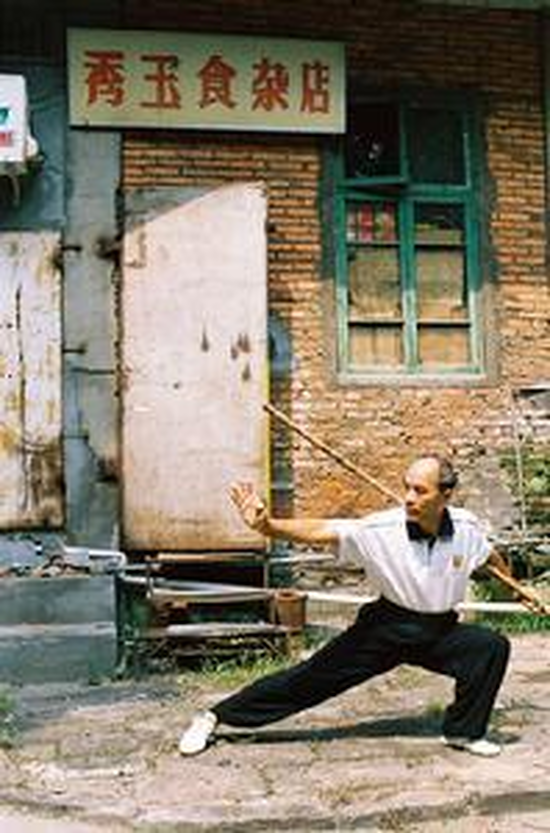 Breath, Bodyweight and Awareness 'Sink' Down Through the Lower Dantian (丹田) and Down Each Leg and Through the Feet into the Ground! The Immense Rebound Force Emits Upwards Through a 'Trembling' Reaction Which Gathers the qi Power into the Desired Area for Offense or Defence! Lin (林) Family Member Practices Outside Their Shop in Fuzhou! Root Ancestor (始祖 - Shi Zu) - Martial Teachings Later Evolved into Okinawan Goju Ryu Karate-Do. The extant Chinese language records state that Xie Chongxiang (谢崇祥) was also known as 'Xie Ru Ru' (谢如如) - and often referred to by his disciples and students as 'Ru Shi' (如师). He was trained in traditional Chinese martial arts by his teacher ‘Lin Dachong’ (林达崇) who was commonly referred to as 'Pan Yu Ba' (盘屿八). Xie Chongxiang was taught (and/or further developed) the following martial arts styles: a) 'Whooping Crane Fist' (鸣鹤拳 - Ming He Quan). b) 'Shaolin Arahant Fist' (少林罗汉拳 - Shao Lin Luo Han Quan). c) 'Shaolin White Crane Fist' (少林白鹤拳 - Shao Lin Bai He Quan). The third example is also often referred to as 'Fujian' (福建) White Crane Fist - whilst the ambiguous language used in his biography suggests that 'Whooping Crane Fist' (鸣鹤拳 - Ming He Quan) is an 'integration' of (and/or an 'improvement' upon) the 'Arahant Fist' (罗汉拳 - Luo Han Quan) style and the 'Shaolin' (or 'Fujian') White Crane Fist' (少林白鹤拳 - Shao Lin Bai He Quan) style (also referred to as 'Yongchun' [永春] White Crane Fist). (The use of the term 'Shaolin' here, refers to the idea that there once existed a number of 'Southern' (南 - Nan) Shaolin sister temples (to the famous 'Henan' Shaolin Temple) which existed in Quanzhou, Putian and Fuqing areas of Fujian province, etc, with each perfecting their own unique and distinct martial arts traditions that were spread out into the lay communities when these temples were destroyed for political reasons). This 'integrating' process appears to have been carried-out by Lin Dachong and Xie Chongxiang during their respective lifetimes. It seems that Lin Dachong built the foundation of 'Whooping Crane Fist' - whilst Xie Chongxiang further developed and completed this transformative process - eventually perfecting the 'Whooping Crane Fist' style! Xie Chongxiang is represented in a typical Confucian style of being a loyal and devout inheritor and preserver of the past - whilst also 'adding' to this wealth of ancient knowledge through his own ingenious innovations manifest through hard work and practical demonstration. He was known generally as ‘Xie Ru Ru’ (Esteemed Elder Brother Xie) even though his two first birth-names were ‘Chong’ and ‘Xiang’. At the age of 13 years old, he relocated (with his father) to the Taijiang coastal area of Northeast Fuzhou, where they lived next to Xing’an (星安) Bridge. His father was called ‘Xie Zunshi’ (谢尊志) and he was renowned as an expert in the fine craft of bamboo weaving and bamboo construction. This is how his father made a living in the Taijiang area. Xie Ru Ru first followed his father – learning the rudiments of the bamboo weaving and construction craft, but when he grew older, he was apprenticed back at his hometown under ‘Lin Kangguan’ (林康官) at the newly opened ‘Treasure Beautiful Fast’ (宝美斋 - Bao Mei Zhai) Shoe Shop! Xie Ru Ru was well-known for working very hard! He would labour all day learning his trade, whilst in the evening and at night he would learn martial arts (拳术 - Quan Shu) from a friend of his father – who came from the ‘Pan Yu’ (盘屿) area of Fuzhou. He was short in stature (about 1.55 meters) but was very stout and muscular in build! Records state that his right-arm was noticeably longer than his left-arm. As he worked so hard (carrying-out various and continuous types of manual labour), his body became very strong, and his mind became very calm (and focused). He was patient and long-suffering. He could endure physical hardship and did not allow the pain he experienced to disrupt his calm state of mind. Due to the development of his mind and body, and the difference in the length of his arms, Xie Ru Ru developed an open-hand (手 - Shou) martial arts style that emphasised (and distinguished) the ‘hard’ (刚 - Gang) and ‘soft’ (柔 - Rou) in its attacking and defending techniques – the two concepts of which were integrated through the developed perception of the mind of the practitioner! His longer (right-arm) was trained to pierce and penetrate the defence of the opponent with ‘hard’ techniques whilst the shorter (left-arm) acted as a highly effective ‘soft’ vehicle for deflecting, diverting and evading any of the opponent’s attacking techniques which threatened to strike the head, torso or lower body, etc. This led to a style whereby Xie Ru Ru fought with his longer right-arm forward – as this gave him the greater ‘attacking’ advantage in combat! When asked what ‘animal’ style this system represented, Xie Ru Ru explained that he had been taught ‘Crane’ (鹤 - He) style by other Masters – but that he had been observing how the White Crane species of bird behaved throughout the day, throughout the season, throughout the year and throughout its life! The White Crane often feigned ‘weakness’ or ‘over-exaggerated' a deficiency it already possessed! This would create an unfounded arrogance in the opponent and served to hide the strengths that the White Crane actually possessed! An over-confident opponent would unknowingly expose their natural weakness when they thought no threat was present! As Xie Ru Ru had strengthened his mind and body, he possessed an immense power which he applied at exactly the right moment in combat – just as the White Crane expertly pecked with its beak, kicked with its feet or deflected with its wings! The White Crane also stepped aside and made itself ‘non-present’ with a perfect timing – a skill that Xie Ru Ru also perfected exactly. This is why he referred to his style of fighting as ‘Crane Fist’ (鹤拳 - He Quan). The fighting style of Xie Ru Ru was eventually transmitted to Okinawa (which used to be a part of China and known as ‘Ryukyu’) where it was developed into what is today known as the ‘Goju Ryu’ style of Karate-Do. This is the ‘Hard-Soft’ School of fighting which has a Chinese origin premised upon the White Crane Fist fighting system. This association was confirmed in 1989 by some of the best leading scholars Mainland China possesses – and in the intervening years has stood the test of time and has resisted every challenge that has been made against it. It is very clear that Xie Ru Ru was the teacher of Higaonna Kanryo – recorded in Okinawa as ‘Ru Ru Ko’ - and it is very clear from Okinawan records (held within the Miyagi family) that Higaonna Kanryo held the martial abilities of Xie Ru Ru with the highest level of respect! Xie Ru Ru was born during the second year of the ‘Xianfeng’ (咸丰) era of the Qing Dynasty (1852), with his ancestral village located in the 'Daibian' (岱边) area of Changle (长乐) County Northeast Fujian province – situated about 20 miles East of Fuzhou. His family was typical of the day and was very poor. At the age of 13 years old, he went to Fuzhou, the provincial capital, with his father Xie Zunzhi. They lived in the Shuanghang (双杭) area near to the Xing'an Bridge. He first learned to be a fine bamboo craftsman, and later he became an apprentice in the Baomeizhai shoe shop opened by his fellow countryman Lin Kangguan. He worked hard during the day (strengthening his mind and body) and he then learned ‘Arahant Fist’ (罗汉拳 - Luo Han Quan) from a friend of his father named ‘Lin Dachong’ (林达崇) during the evening and at night! As he was short and stocky, and because his right-arm was longer than his left-arm, Xie Ru Ru developed a martial style that perfectly blended the ‘hard’ with the ‘soft’ (equating these two concepts with the perfect interaction of yin and yang 陰陽). The ‘hard’ represented the ‘external’ (外 - Wai) whilst the ‘soft’ represented the ‘internal’ (內 - Nei) - with the mind and perception of the practitioner distinguishing and integrating these two important and profound concepts. Although possessing a disability regarding the disproportional length of his arms, Xie Ru Ru was highly intelligent and used his circumstances to the best of his ability! Just like a White Crane (which appears weak and fragile), Xie Ru Ru used his natural attributes to a great advantage over his opponents! This in itself constitutes a great and profound achievement and demonstrates the triumph of the human spirit over the limitations presented by material reality. Xie Ru Ru was highly intelligent, and he used his advanced thinking ability to transcend the physical limitations that life had presented him with! The physical structure, behaviour and reactions of the Fujian White Crane offered Xie Ru Ru a vehicle to achieve this mind and body transformation! The material reality defining Xie Ru Ru’s body and living conditions provided him with a challenge which allowed him to develop the ‘Arahant Fist’ system he had learned from Lin Dachong (also known as ‘Pan Yu Ba’) - and to explore and further develop the White Crane system that Lin Dachong is recorded as experimenting with! The rapid application and interchange of ‘hard’ and ‘soft’ techniques formed the basis of Xie Ru Ru’s martial expertise. The record books state that Lin Dachong began the developmet of ‘Whooping Crane Fist’ (鸣鹤拳 - Ming He Quan) and the Xie Ru Ru continued this development and perfected the theoretical principles and practical applications of this style. Although training to toughen the mind and body – Xie Ru Ru perfected the application of overcoming an opponent through the exclusive use of ‘soft’ open-hand techniques. This ability prevailed in the midst of the most violent martial encounters! Xie Ru Ru would remain calm and indifferent to an opponent who was acting from greed, hatred and delusion! No matter how big, strong or violent an opponent was, Xie Ru Ru would expertly evade, deflect and ‘pierce’ the defence of these aggressors with a measured ease! Indeed, he became very famous and was renowned for his martial skills far and wide – certainly beyond the geographical limitations of Fuzhou! Xie Ru Ru mastered the ability of gathering and transporting (运 - Yun) the ‘Vital Force’ (气 - Qi) contained within the breath, bodyweight and will-power (intention) - so that it could be dramatically and radically expressed – copying the White Crane when it emits its ‘cry’ (鸣 - Ming) with a sudden and overwhelming power – which Xie Ru Ru expressed in a kick, punch, block, deflection or other type of strike! Although perfecting a ‘relaxed’ body, Xie Ru Ru could suddenly gather all the ‘qi’ energy into a certain bodily area and express this as a temporary but extreme form of muscular ‘tension’ - termed ‘Iron Vest’ (铁布杉 - Tie Bu Shan) - within Chinese martial arts! Xie Ru Ru could also ‘tense’ his entire musculature for extended lengths of time – an unusual ability even amongst those who had perfected the Iron Vest technique! When all these martial abilities Xie Ru Ru possessed were gathered together, they were said to be expressed perfectly through the ‘Whooping Crane Fist’ (鸣鹤拳 - Ming He Quan) system! The White Crane is relaxed and apparently ‘unconcerned’ about circumstantial dangers – but suddenly it emits a piercing ‘cry’ as all the qi energy is directed to a pinnacle of martial expression! Xie Ru Ru mastered the ability to express a devastating, fast and momentarily ‘tense’ martial technique that devastated the opponent before naturally retracting this qi energy back into the mind and body - and ‘returning’ this qi energy back into a relaxed state of ‘rest’ and position of ‘replenishment’ (and ‘regathering’). This is the White Crane fluttering its feathers, realigning its wings and going back to stepping around its living space and seeking out food in the ground with its beak! At this time there was a well-known martial arts expert who was resident at the General’s Mansion in the local area. He was employed as a ‘bodyguard’ for local government officials and appears to have been a Buddhist monk as he was known as the ‘Venerable Xiao’ (萧和尚 - Xiao He Shang). He had been told that there was a very good martial arts Master living in the local area who possessed a number of unusual martial arts abilities. The ‘Venerable Xiao’ was employed to teach the local militia a superior martial arts ability that could be used to police the local population! The problem was that local people were saying that Xie Ru Ru was a better martial artist than the ‘Venerable Xiao’! If this was the case, then why was the ‘Venerable Xiao’ being employed in the high governmental post he was currently occupying? One day, ‘Venerable Xiao’ met with Xie Ru Ru and they discussed their respective martial arts – and engaged in a friendly sparring match – which Xie Ru Ru won easily. ‘Venerable Xiao’ bowed down and recognised Xie Ru Ru as his teacher – thanking him for the valuable lesson! There was also a local doctor named ‘Wang Shi’an’ (王士庵) who was an expert in medicine and martial arts. When Wang Shi’an challenged Xie Ru Ru – Xie Ru Ru prevailed easily and Wang Shi’an recognised Xie Ru Ru’s superior martial ability. Meanwhile, Xie Ru Ru recognised the medical expertise of Wang Shi’an - and stated that genuine Chinese martial arts are partly effective self-defence combative techniques on the one hand, whilst on the other hand are reinforced by the ability to ‘heal’ and to ‘treat’ people when injured and/or ill! Xie Ru Ru explained that this dichotomy is yet another example of the harmonious interaction of ‘hard’ and ‘soft’ approaches to the polarity that defines reality. *Sometimes written as ‘Xie Zongxiang’ (谢宗祥) Chinese Language Source: 谢如如
谢崇祥,男,福建福州长乐县人,中国武术名家,为鸣鹤拳传人。 谢崇祥为长乐县岱边人,小名如如,他的徒弟称呼他为如师。师从潘屿八,学习南少林白鹤拳,后以拳技闻名于福建。 琉球刚柔流空手道始祖 谢如如字崇祥,13岁随父迁居福州台江星安桥畔,父亲谢尊志在台江作细竹工谋生,如如随父亲学作竹匠。后往同乡林康官开设的宝美斋鞋铺当学徒。如如生性勤劳,白天学艺,晚上拜其父好友(盘屿人)学习拳术。他身材矮小(约1.55米左右),体格粗壮,右臂长于左臂,由于他刻苦锻炼,创造一种刚柔手法,形成独具风格的鹤拳。 琉球刚柔流空手道始祖谢如如,生于清咸丰二年(1852年),祖籍长乐县。家贫,13岁时随父谢尊志到省城福州闯荡,住在双杭星安桥畔。最初学习做细竹匠,后来又到同乡人林康官开设的宝美斋鞋店当学徒。他白日学艺,晚上跟父亲好友、南台岛盘屿人林达崇学习罗汉拳。谢如如个子矮小但体格强壮,他的右臂比左臂长,因而具有天然的优势,加上天资聪颖,就独创了一套刚柔手拳术。这种柔手法风格的鹤拳,因运气时声如鹤鸣,遂名为“鸣鹤拳”。当时有个叫“萧和尚”的将军府武术教练,听说了谢如如的事,找上门来要切磋,结果交手即败,最后甘拜下风,拜谢如如为师。当时拜谢如如为师的还有一位医生名叫王士庵,武德医德相得益彰。 Dear Tony The Chinese language encyclopaedia pages regarding Miyagi Chojun suggest that he went to China in 1915 to meet 'Shi Gong' (Xei Chongxiang) and other gongfu masters because Higaonna Kanyro was still in regular communication with them! Assuming this communication was by the written word (although it could have been by word of mouth), then there should be a written record somewhere in China even if all the replies were destroyed in 1945 in Okinawa! Furthermore, and more to the point, Miyagi Chojun was probably the first visitor to Xie Chongxiang from Okinawa since Higaonna Kanryo left in 1881 - so here is our answer to some extent! Miyagi Chojun probably conveyed all the history he knew of Higaonna Kanryo's earlier visit and education in China - to any and all the Chinese Masters he met - thus spreading the knowledge! Modern Okinawan Goju Ryu Karate-Do is comprised of the following Chinese martial arts styles and systems: a) Fujian White Crane Fist (福建白鶴拳 - Fu Jian Bai He Quan) - which originated in Yongchun County. b) Southern Shaolin Fist (南少林拳 - Nan Shao Lin Quan) - probably Quanzhou, but also the sister temples of Putian and Fuqing. based upon Pan Yu Ba's 'Eighteen Arahant Fist' (羅漢拳 - Luo Han Quan). c) Whooping Crane Fist (鳴鶴拳 - Ming He Quan). From (and between) 1912-1915 with the arrival of Wu Xiangui (Go Ken Ki) on the scene! I suspect Wu Xiangui introduced Miyagi Chojun to 'Whooping Crane' in Okinawa - but then took him to see his Master (Xie Chongxiang) in 1915 as a representative of Higaonna Kanryo (as Higaonna Kanryo was too ill to travel). I think the outer frame of Goju Ryu is obviously Southern Fist - which looks very 'Northern' in part and perhaps this is the origination of the wide and broad Horse Stance (which looks just like our Longfist Forms)! The 'inner' frame of Goju Ryo is Fujian White Crane - which has a crossover with such arts as Taijiquan, Xingyi, Xinyi and Baguazhang, etc! The maintaining of 'tension' was taught to me as 'steel wire' in English but I later found out the proper Chinese term is '缠丝劲' (Chan Si Jin) - or 'winding silk unyielding force'. This is taught within Taijiquan and all authentic forms of White Crane. The power is relentless, endless, self-propelling and self-replicating. It is not dependent upon physical fitness (although it is acquired only after a life time of relentless mind-body training without mercy) and is not negated or diverted by physical conditions. It is a universal force that operates regardless of life or death. My Master used to say that it is like a heavy iron ball rolling in all and any directions! Nothing can stop it. The secret lies in the Kata construction of Goju Ryu which is as follows: Higaoona Kanryo Fujian White Crane Fist and Southern Fist Forms (Katas) brought back from Fuzhou - China (c. 1881): 碎破 (Sui Po) = Saifa 制引战 (Zhi Yin Zhan) = Seiyunchin 四向战 (Si Xiang Zhan) = Shisochin 三十六手 (San Shi Liu Shou) = Sanseru 十八手 (Shi Ba Shou) = Seipai 久留顿破 (Jiu Liu Dun Po) = Kururunfa 十三手 (Shi San Shou) = Seisan 一百零八手 (Yi Bai Ling Ba Shou) = Suparinpei 三战等 (San Zhan) = Sanchin Miyagi Chojun Whooping Crane Form (Kata) brought back from Fuzhou - China (1915) 六机手 (Liu Ju Shou) = Rokuki - later developed into 'Tensho' (转掌 - Zhan Zhuan). Wang Xiangui came to Okinawa in 1912 (where he lived until his death in 1940) - he was sent to assist Higaonna Kanryo by Xie Chongxiang (Higaonna Kanryo died in 1915). Became Miyagi Chojun's teacher and accompanied him to and from China in 1915. Miyagi Chojun - Constructed Kata (1937) In 1937, when Japan declared war on China, Miyagi Chojun is employed as a High School Sport Instructor and tasked with teaching Goju Ryu Karate-Do to High School Students destined to be recruited into the Imperial Japanese Army. Goju Ryu training proved too difficult in its traditional form for short-term students passing through limited-time classes - so Miyagi Chojun carefully constructed two Basic Katas that convey a sound appreciation of self-defence: 击碎第一 (Ji Sui Di Yi) = Gekisai Dai-Ichi* 击碎第二 (Ji Sui Di Er) = Gekisai Dai-Ni* Within these two Katas - Miyagi Chojun introduced the concept of the '上段扬受' (Shang Duan Yang Shou) - or 'Jo Dan Age Uke' in Okinawan. This is a highly technical term that translates as 'Upper Level Raising Interception' - and which today is universally known by its English translation of 'Upper Block'. (This upper 'blocking' technique involves the coordinated crossing, rubbing and inter-changing of the toughened fore-arms (with closed fists) in front of the chest area as each is alternatively raised above the forehead (whilst defending the middle and upper levels) - with the intention of deflecting a downward descending blow directed to the top of the head - or diverting a straight punch or similar strike to the face, etc. Today, the exact angle of the raised block with the closed hand varies according to the preference of the Karate-Do style). According to Chinese language sources, this 'Upper Block' did not exist in the Karate-Do styles extant upon the island of Okinawa prior to 1937 - and that Miyagi Chojun is recognised as the sole originator of this technique as practiced within the art of Karate-Do. Prior to this, the Naha-Te - Goju Ryu style utilised a typical White Crane defence that saw an elevated mid-level defence raised up to neck and head height - where the palm and fingers of the open hands would deflect (or slap) blows away to the side. Miyagi Chojun may have seen similar upper blocking movements whilst observing other Chinese styles of martial arts (where these movements are often a combination of a closed handed punch and a fore-arm deflection) - different Chinese martial styles that had not yet penetrated Okinawa or the Karate-Do community! Thanks Adrian *These Katas were a product of rampant Japanese 'Nationalism' and were designed, at the time, to prepare the minds and bodies of young Japanese men (for their stint in the military) from 1937 onwards to attack and kill Chinese men, women and children. From 1941 onwards, this Japanese 'Nationalist' aggression would be aimed at civilian populations throughout Asia, and include the militaries of the West, etc. In late 1945, this Japanese 'Nationalist' aggression would be aimed at the Soviet Red Army as it strove to 'Liberate' (Manchuria - Northeast China) from Imperialist Japanese Occupation! I am reminded of Funakoshi Gichin's biography where he proudly mentioned himself preparing thousands of young Japanese men for 'unarmed' Karate 'Banzai' charges aimed primarily at attacking US soldiers! It is ironic that all those non-Japanese people who practice Japanese Karate-Do throughout the world today, have absolutely no idea of the 'racist' historical reality 'embedded' in many of the more recent 'Katas' still taught to beginners as primers for the style!
Dear Tony
剛柔流空手道 (Goju Ryu) https://baike.baidu.hk/item/剛柔流空手道/3317563 空手道歷史流傳 (Karate History) http://www.seigokanhk.com/html/history.html These are two Chinese language encyclopaedia pages for 'Goju Ryu Karate-Do' (Chinese: 'Gang Rou Liu Kong Shou Dao). An important sentence for this research is as follows: '該流派 空手道有明顯的南拳特色...' 'This lineage of karate (Goju Ryu) possesses the obvious characteristics of 'Southern Fist' (南拳 - Nan Quan).' Although the three different Southern Shaolin Temples in Fujian all practice Northern martial arts mixed with Southern styles - only one of these temples is specifically mentioned as first developing the style 'Southern Fist' and that is the Southern Shaolin Temple at 'Putian'. Another interesting sentence is: '該流系“南舟北馬”中的南派功夫,受系統來自南少林拳白鶴門。' 'This lineage emphasises the technique of the "Southern Boat and Northern Horse" (Nan Zhou - Bei Ma) - a Southern Style of martial arts (This refers to two types of Horse Stance with the 'Northern' version being deep, low and stable and the 'Southern' version being high, light and flexible). This was passed-on through the "White Crane Gate" of the Southern Shaolin Fist tradition.' This would suggest that the White Crane Fist concerned may well have been learned by Xie Chongxiang (Ryu Ryu Ko) at one of the Southern Shaolin Temples (both the Putian and Fuqing Southern Shaolin Temples are in the vicinity of Fuzhou - where Xie Zongxiang is believed to have lived. The Teacher of Higaonna Kanryō is described in Chinese language sources as '謝崇祥' (Xie Chongxiang) [b. 1852 - ?]- aka '如如哥' (Ru Ru Ge). In the Chinese language this reads something similar to 'Like Like Elder Brother' or perhaps 'Popular Elder Brother' as it is a nickname. Within the Okinawan language - the Chinese ideograms '如如哥' (Ru Ru Ge) are pronounced 'Ryu Ryu Ko'. His surname is '謝' (Xie) and his first names are 'Chongxiang' - with 'Chong' meaning 'Lofty' or 'Esttemed' and 'Xiang' meaning 'Auspicious'. This probably refers to a prominent son who was expected to keep the family clan-name alive by having sons and passing on the family surname to future generations. He is also known as '劉良興' (Liu Liangxing), 'Liu Lomg' (劉龍) and '鄭禮' (Zheng Li) - all believed to be pseudonyms. Even 'Xie Chongxiang' could mean 'Thank the Auspicious Lineage'! All I can find about Xie Chongxiang's background at the moment is this: '如言語上的溝通,生活習慣的適應等,終於得償所願,拜得嗚鶴拳宗師謝宗祥(如如哥)為師,學習嗚鶴拳。謝宗祥本身是一位竹匠,前後東恩納先生在中國習武十五年,才拜別師傅返回日本沖繩那霸市,返國前已懂得草藥的運用技巧。' 'Through communication by word of mouth and adaptation of his living habits to the norms of Chinese culture, etc., he achieved what he was looking for. He was finally accepted into a Chinese martial lineage and taught by a great Master of White Crane Fist - one Xie Chongxiang (Ru Ru Ge). Xie Zongxiang made a living through being a very good bamboo craftsman (carpenter).' I would say that there is a very high possibility that Xie Chongxiang (Ryu Ryu Ko) was taught White Crane Fist at one of the Southern Shaolin Temples (either Putian or Fuqing). Another possibility is that he learned outside the temple from someone else who had learned in the temple during his lifetime, or that one of his ancestors had been a Shaolin monk in his youth before disrobing, marrying and then teaching the martial arts to his sons. In the latter case - Xie Chongxiang would have inherited the White Crane Style from his father, etc. One thing is for certain, styles were certainly not 'open' like they are today and in the 1870s the family and temple lineage would have been very exclusive indeed. Money would have meant nothing unlike today. Character, virtue, loyalty, duty and gaining the right kind of references was the only way of securing a genuine teacher who may have taught only one or two students during his entire life! Apparently, the devastation suffered during the Battle of Okinawa destroyed all the records - a fact recorded in both China and Okinawa. Best Wishes Adrian |
AuthorShifu Adrian Chan-Wyles (b. 1967) - Lineage (Generational) Inheritor of the Ch'an Dao Hakka Gongfu System. |

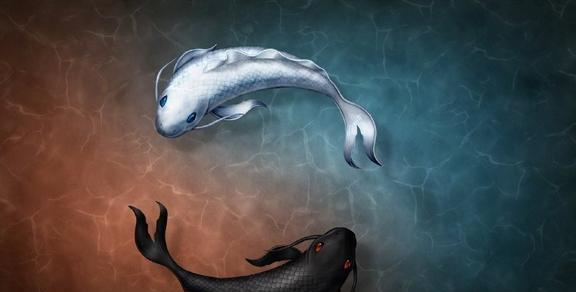
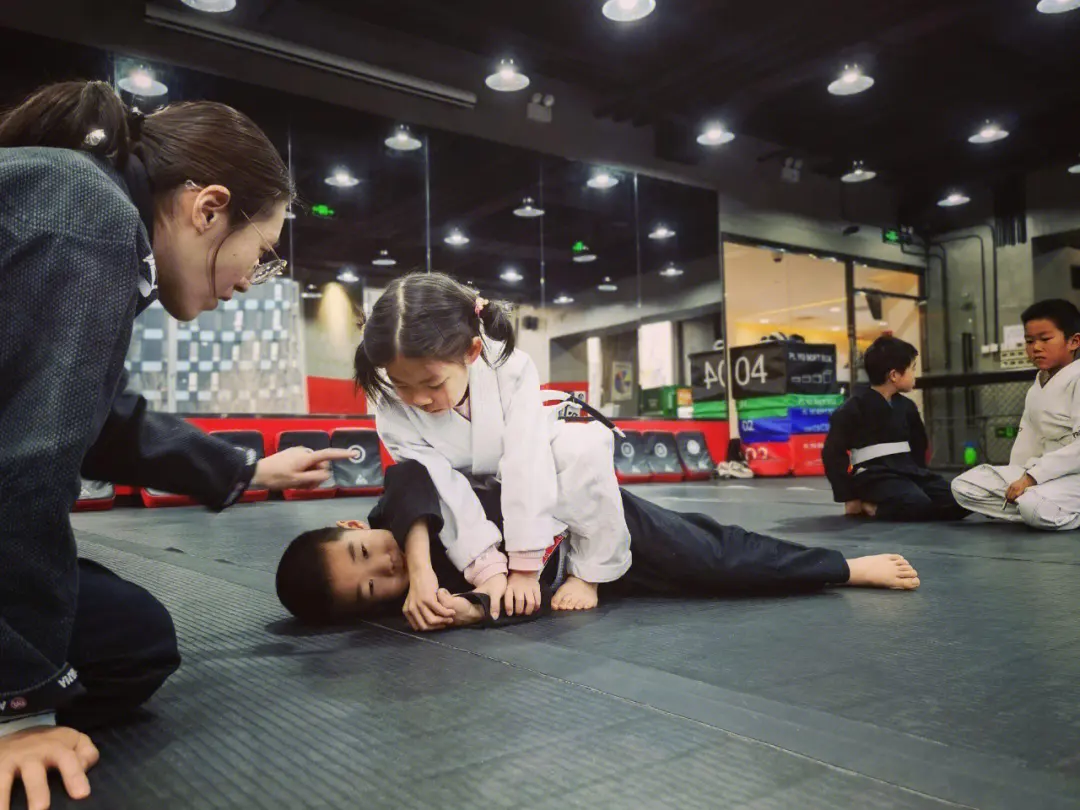
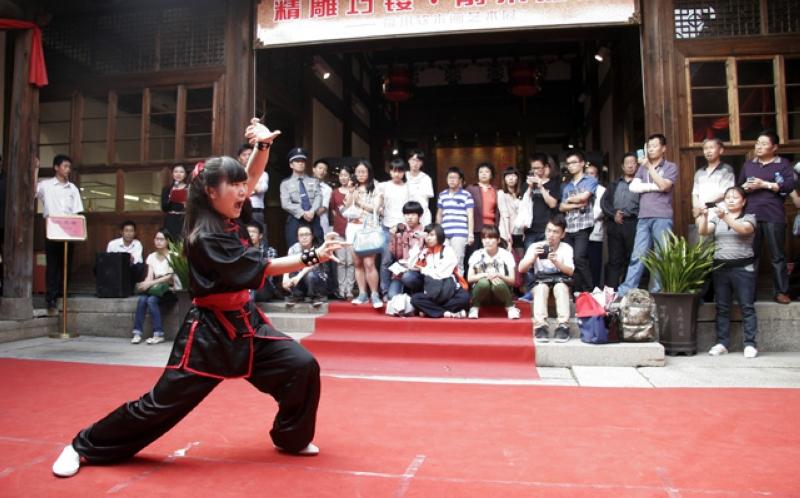
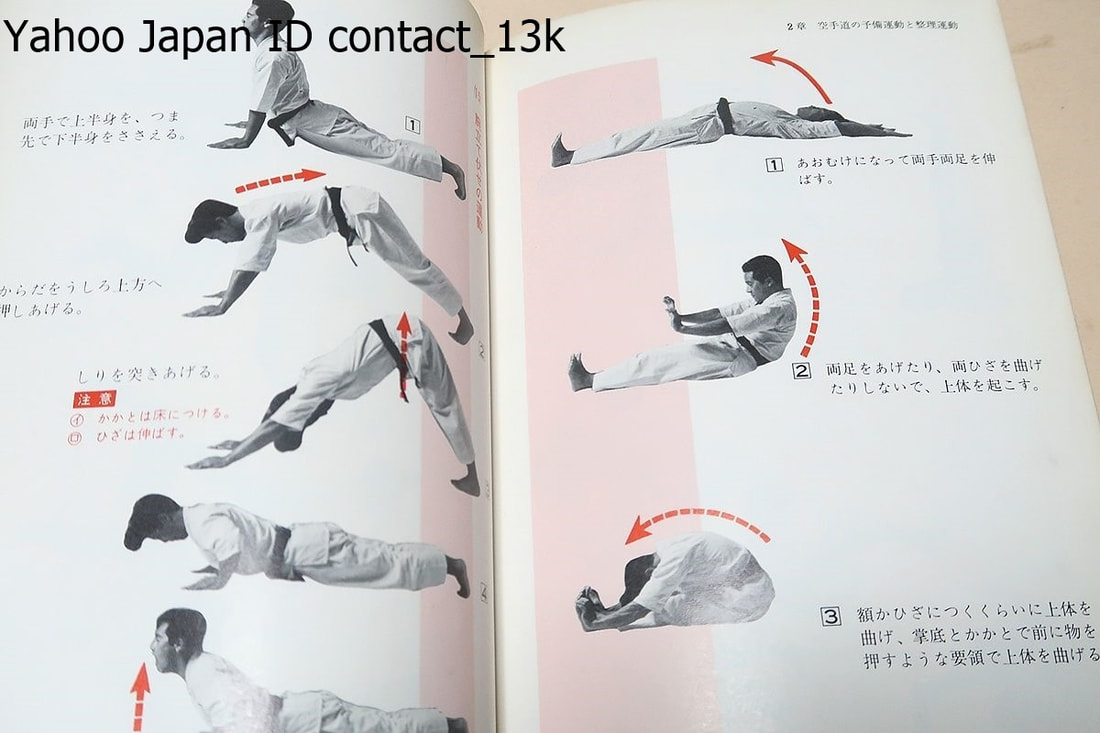
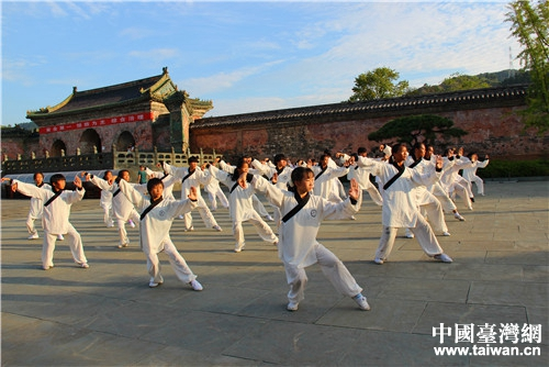
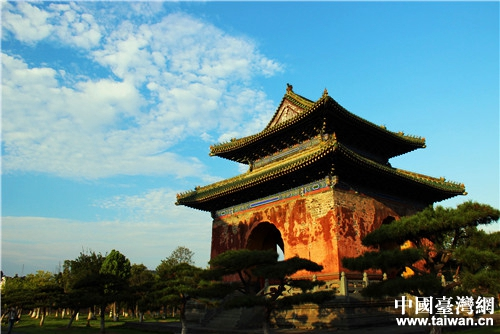
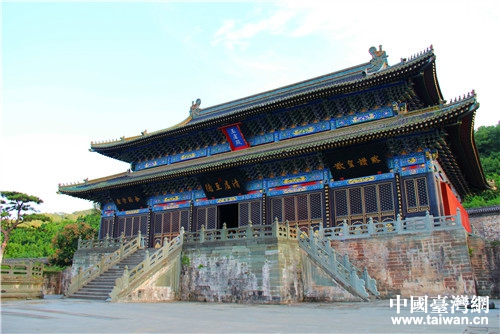
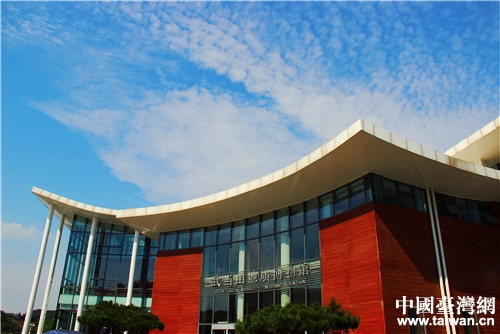
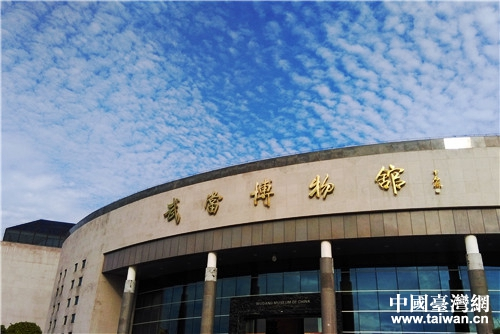
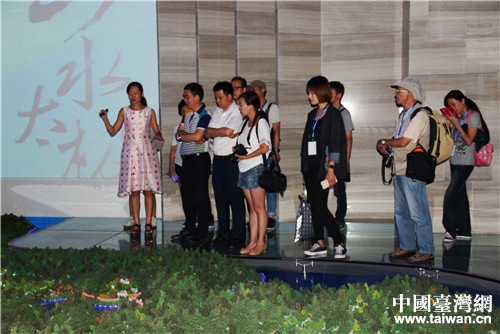
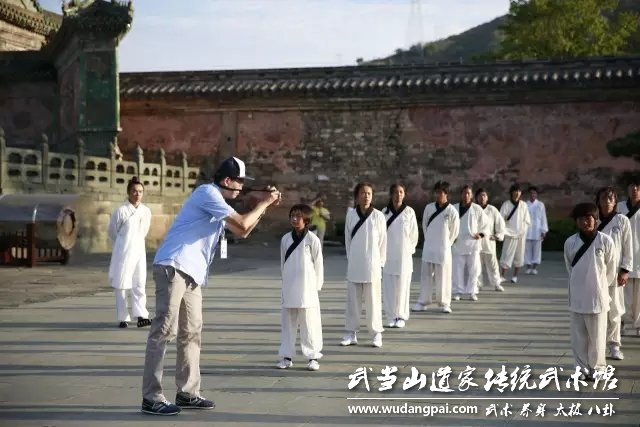
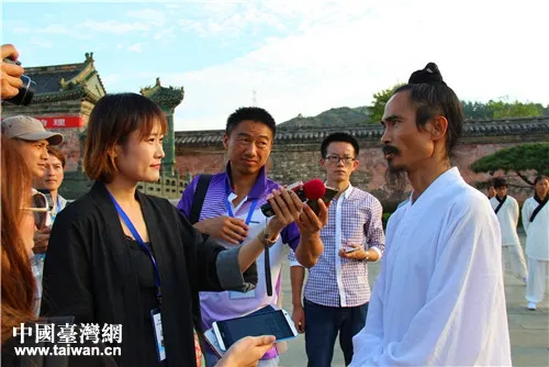
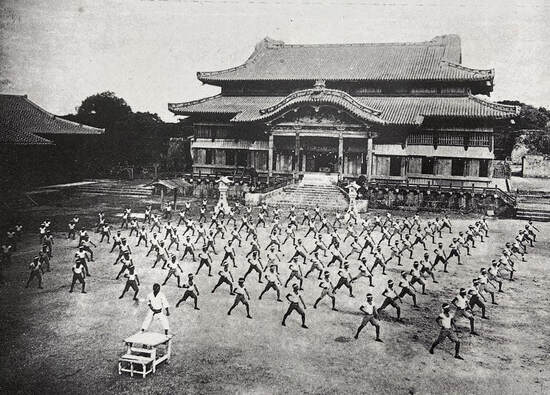
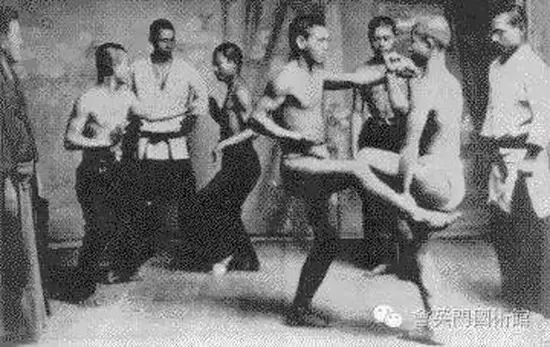
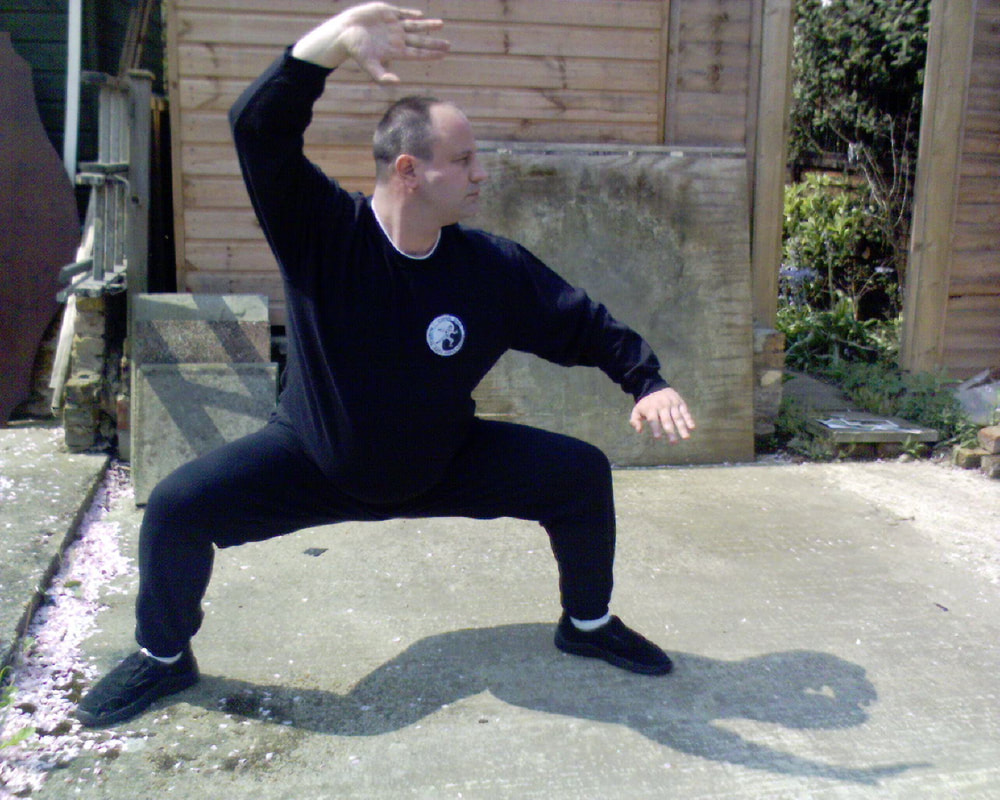
 RSS Feed
RSS Feed